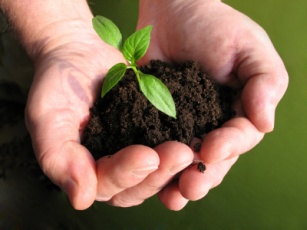COP15 looks like it may well be a cop out. The world was disappointed when it became clear Barack Obama would not get climate protection legislation through the U.S. Senate, endangering any meaningful global agreement. But a much earlier cop out came when agriculture failed to make it onto the agenda at all.
There is growing awareness of this sector’s significance. Within the E.U., the food we eat represents nearly a third of the climate footprint of consumers. When it comes to tackling farming’s footprint, all eyes have been on livestock-related methane emissions and nitrous oxide emissions from fertilised fields, or the potential to generate energy from biofuels and the anaerobic digestion of animal wastes. Aspirations are low. The 2020 target for agriculture in the U.K.’s Low Carbon Transition Plan is a voluntary 6-11 percent greenhouse gas reduction, compared to mandatory 20-40 percent targets in all other sectors of the economy.
One big blind spot remains, both in this country and elsewhere: soil carbon. Soil carbon sequestration, according to the IPCC’s scientific advisors on land use, represents 89 percent of agriculture’s greenhouse gas mitigation potential. Soil carbon losses caused by agriculture account for a tenth of total CO2 emissions attributable to human activity since 1850. However, unlike the carbon released from fossil fuels, the soil carbon store has the potential to be recreated to a substantial degree, if appropriate farming practices are adopted. By this we mean organic farming, with its strong reliance on animal fertilizer and avoidance of oil-based inputs and pesticides. Organic farming would remove large quantities of carbon from the atmosphere every year for the next 20 years at least. If all U.K. farmland was converted to organic farming, at least 3.2 million tonnes of carbon would be taken up by the soil each year — the equivalent of taking nearly one million cars off the road. Action to increase soil carbon levels can therefore contribute substantially to the efforts to rapidly cut GHG emissions and avoid dangerous atmospheric CO2 increases.
Furthermore, raising soil carbon levels can make a vital contribution to climate adaptation, by improving soil structure and quality, reducing the impacts of flooding, droughts, and desertification, thereby also improving global food and water security.
So far, soil carbon is largely being ignored by climate policymakers and analysts in the U.K.. Critics have been too quick to dismiss soil carbon sequestration on the basis that the rates of sequestration tend to diminish 20 years after a switch to improved practices. But it is the next 20 years that will be critical in policy terms for delivering major greenhouse gas reductions. Moreover, carbon sequestration still continues thereafter, albeit at lower rates, for 100 years or more.
Recently, there have been encouraging signs of engagement with the issue at the European level. However, in the U.K., action on soil carbon was deferred in favor of a call for more research. Our report Soil Carbon and Organic Farming is a response to that challenge. The evidence it presents suggests that action to raise soil carbon levels — through more widespread adoption of organic farming practices and grass-based and mixed farming systems — can make a significant and immediate contribution to the greenhouse gas mitigation.



